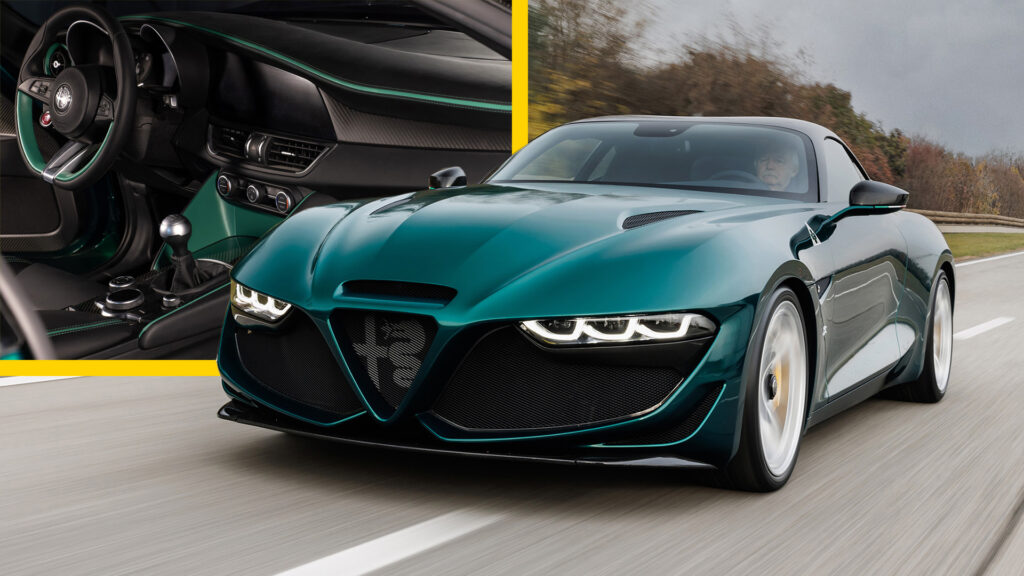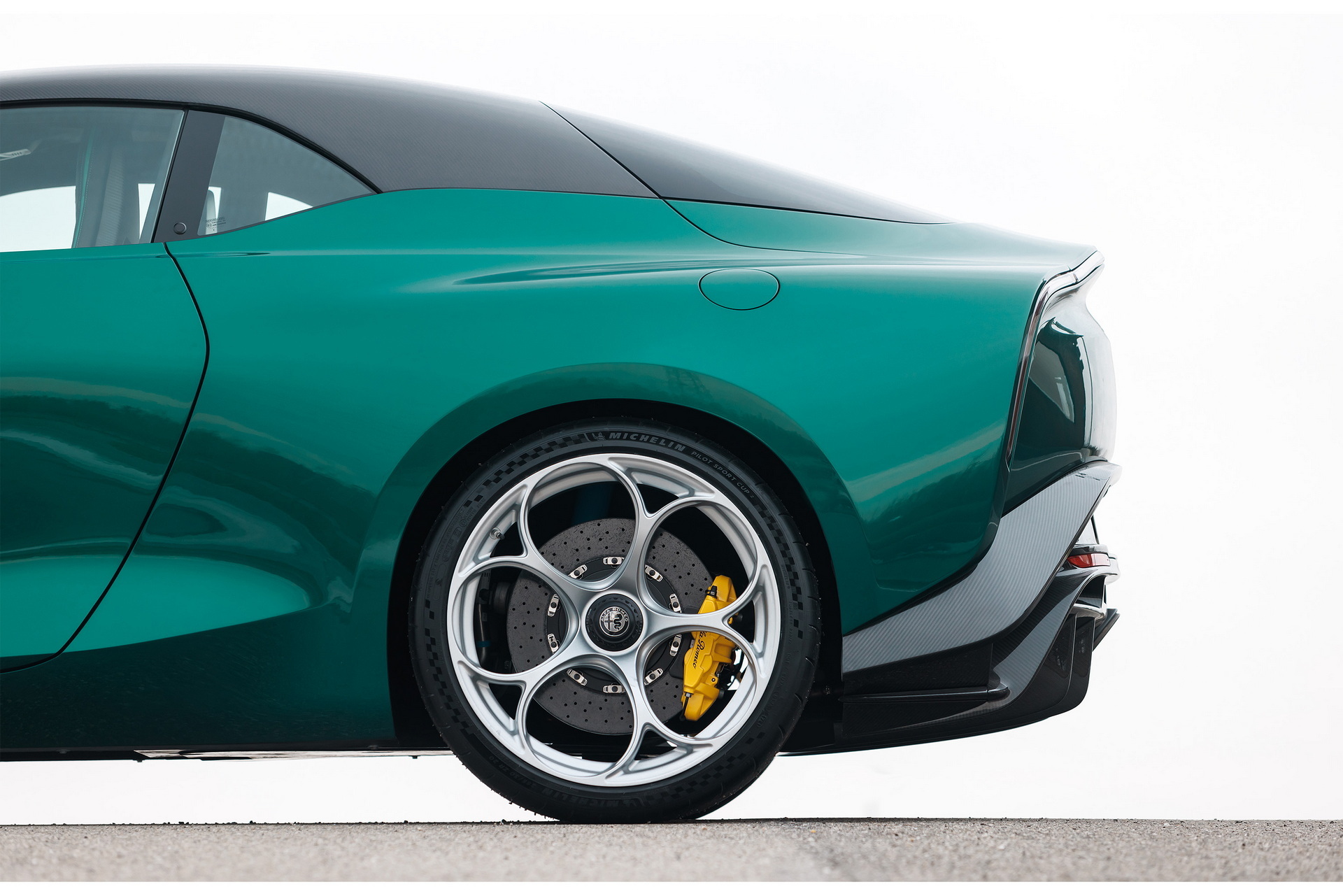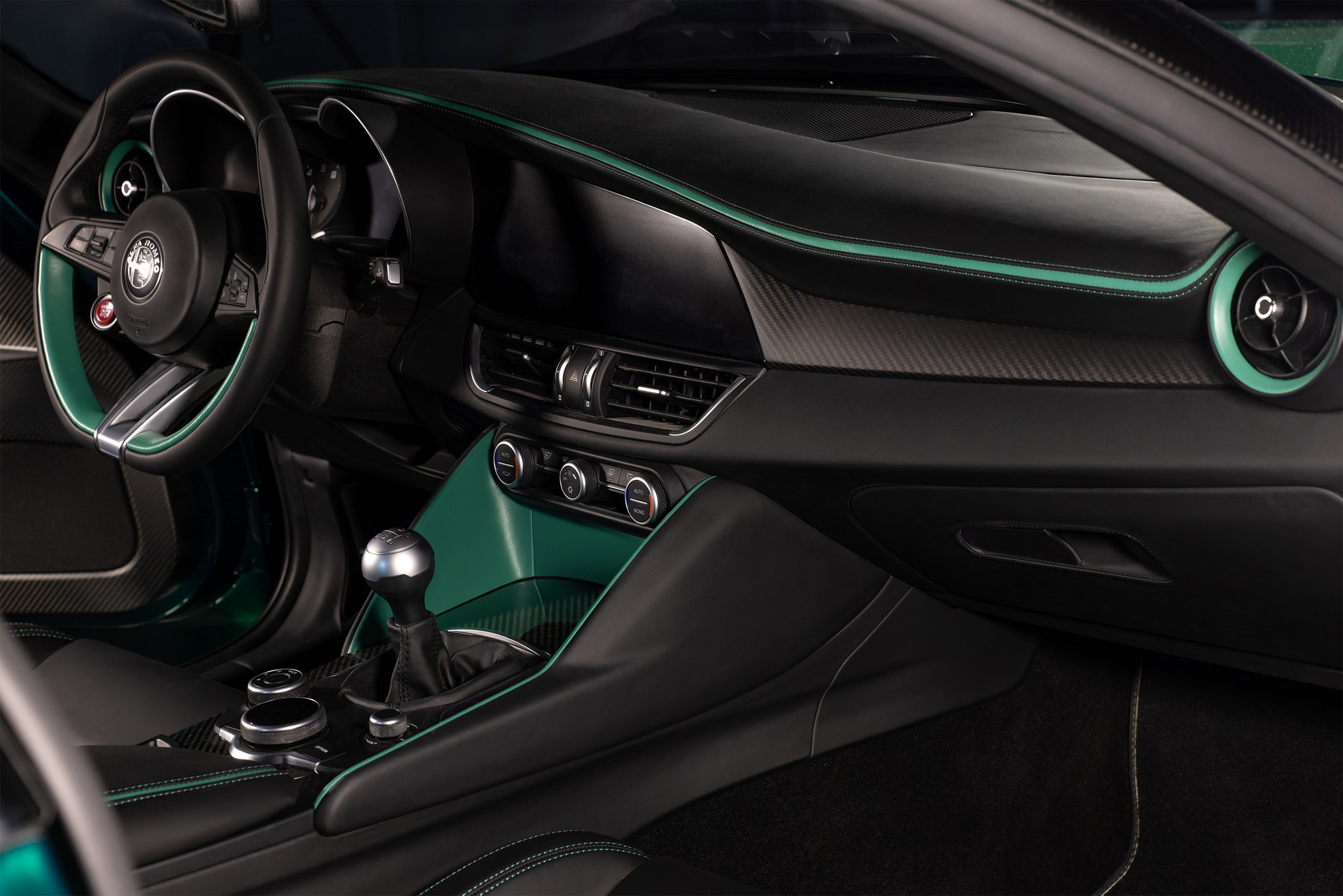Zagato has taken the wraps off the Alfa Romeo Giulia SWB, a one-off coachbuilt special designed to celebrate the 100th anniversary of the first collaboration between the two companies. The model, courtesy of a German collector, is based on the Alfa Romeo Giulia, but comes with a shortened wheelbase, a bespoke two-door coupe body, and a biturbo V6 sourced from the GTAm mated to a six-speed manual.
While earlier reports expected the Alfa Romeo Giulia SWB Zagato to be a limited production model, the Italian design house made it clear it is a one-off build. The project started in 2021, exactly 100 years after the Tipo G1 which was the first collaboration between Zagato and Alfa Romeo. The unique vehicle belongs to a German customer who owns many Alfa Romeo models including the 8C Competizione and the S.Z., plus several Aston Martin Zagatos of the modern era.
Read: Zagato’s Latest Model Is A Stunning And Luxurious Electric Hyperboat
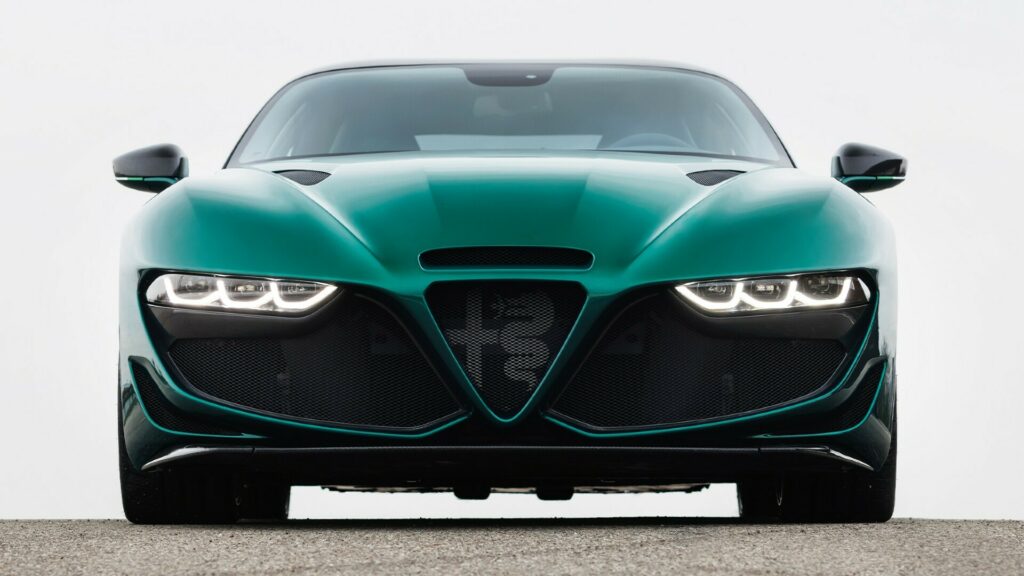
The donor car for this build was a manual Alfa Romeo Giulia Quadrifoglio. Zagato shortened the wheelbase and tweaked the overhangs of the Giorgio architecture, while upgrading the underpinnings to GTAm specification. This means that the model is powered by the biturbo 2.9-liter V6 petrol engine, likely producing 532 hp (397 kW / 540 PS) as in the GTAm, although in this case power is transmitted to the rear wheels through the European-specification Quadrifoglio’s six-speed manual. Despite he fact that the Alfa Romeo Giulia SWB shares most of its underpinnings with the mainstream Giulia and Stelvio, the bodywork is completely new.
The front end is very aggressive, combining low-mounted LED headlights sourced from the Alfa Romeo Tonale with a large scudetto grille surrounded by a pair of massive bumper intakes and an additional opening on the heavily sculpted vented bonnet. There is also a carbon fiber splitter accentuating the sporty looks. The result has the brutality of the SZ from the ’90s, although it is a lot curvier compared to the boxy original.
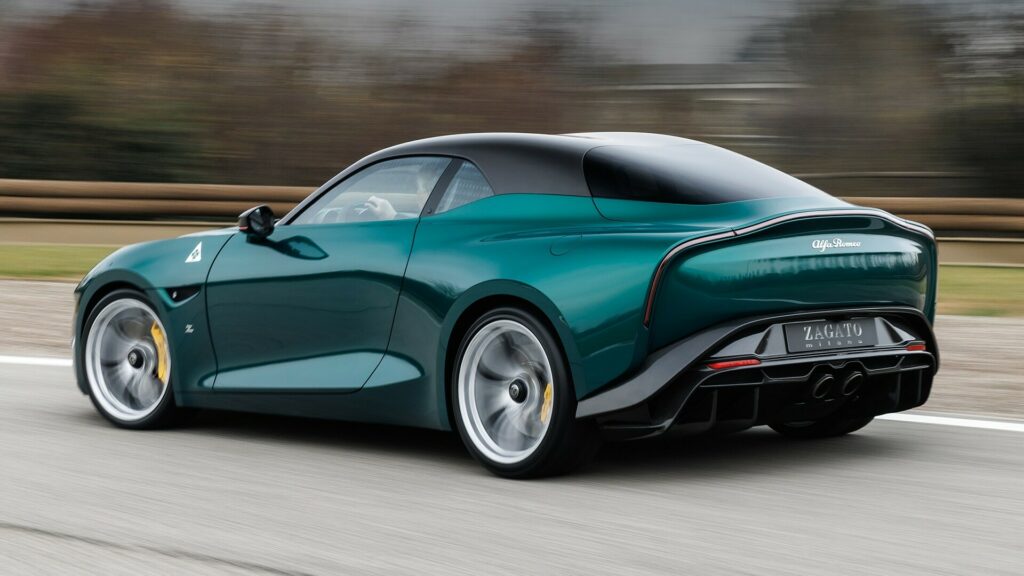
Moving over to the profile, the front fenders have side gills, the triangular Quadrifoglio badge, and the Zagato emblem. The five-spoke center-lock alloy wheels are also sourced from the GTAm, although in a shining silver finish (rather than black) with yellow brake calipers. The wheelbase is significantly shorter compared to the Giulia sedan, with two large doors featuring hidden door handles. Proportions are reminiscent of Zagato coupe models from the past, due to the long bonnet and the sloping roofline leading to the fastback tail through the pronounced shoulders.
The rear end is characterized by the Kamm-tail design similar to the TZ range of Zagato-designed Alfa Romeos, highlighted by a thin LED strip. Some would say that the taillights are reminiscent of Aston Martin, which is understandable if you consider Zagato’s involvement with the design language of the latter. Other features include the large two-story diffuser with centrally-mounted dual exhaust pipes, and the bubble roof which is a signature design element of Zagato and extends to the inclined rear windshield.
A Custom Take On The Giulia’s Interior
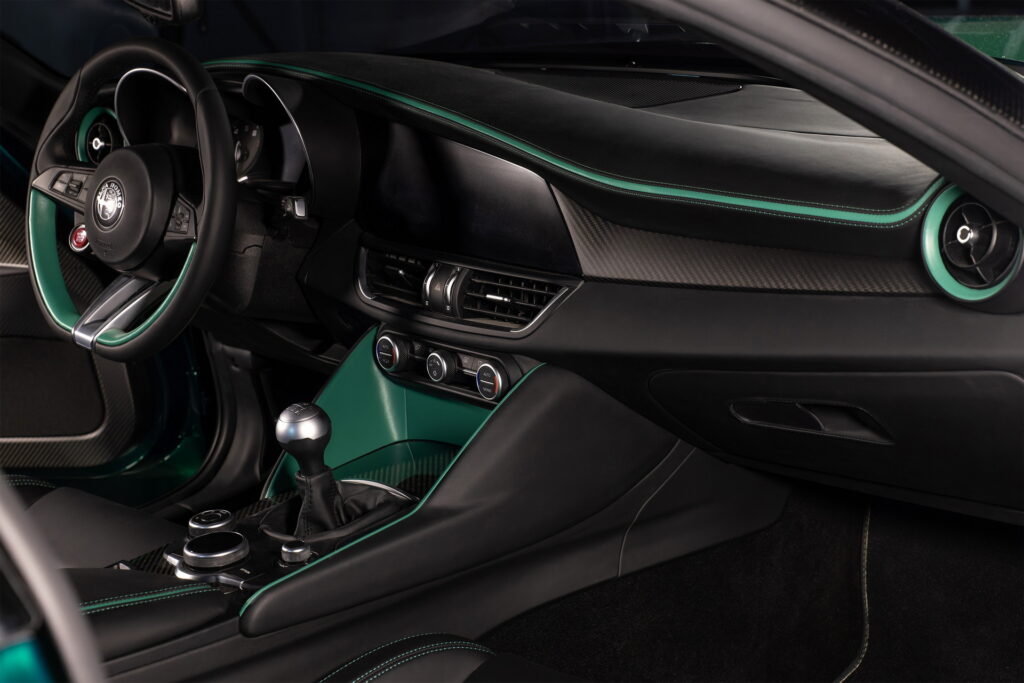
The interior is bathed in carbon fiber, retaining the dashboard layout of the Giulia. It combines black leather with green accents and stitching, matching the exterior shade which looks like the GTAm’s Montreal Green. The “Cannocchiale” instrument cluster has a mixture of analog and digital gauges, while an infotainment touchscreen is likely hidden behind the black panel. The steering wheel with the start-stop button, the climate controls, and the aluminum shifter for the manual gearbox are directly sourced from the Giulia but other features are bespoke like the carbon-fiber door cards. Predictably, the cabin has a two-seater configuration, with carbon-fiber bucket seats featuring the Z emblem on the integrated headrests.
The design of the coachbuilt special was undertaken by Zagato supported by Alejandro Mesonero, the head of Centro Stile Alfa Romeo, and his team of designers. However, all of the development and production work was carried out entirely by the Milanese Atelier “without external support”. For this reason, Zagato mentions that the Alfa Romeo badges on the car are “solely for descriptive and promotional purposes and Zagato’s choice to draw inspiration from the Alfa Romeo S.Z.”.
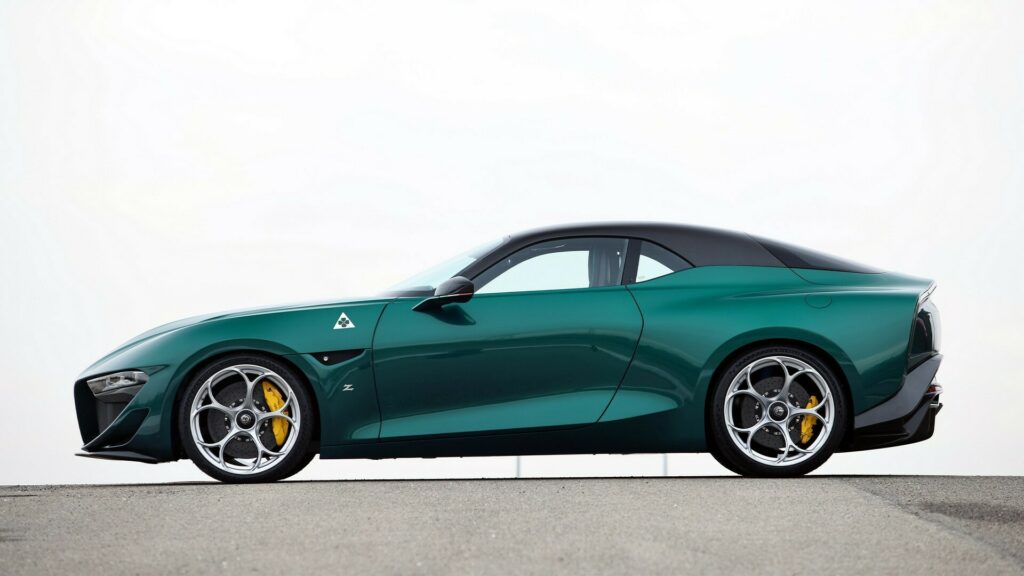
Speaking about the one-off, Alejandro Mesonero said that it “fits perfectly into the historical path of the two marques where the first objective was and is to combine beauty with performance”, adding that “The philosophy of this new 2023 SZ is that of the 1960s, with a body driven by simplicity, aerodynamics, and lightness.”
The unique model was photographed on the “La Pista” circuit in Arese, near the Alfa Romeo Museum, before being handed over to its owner. Andrea Zagato, CEO of the Milanese company notes that this is where the Alfa Romeo Giulietta SZ and Giulia TZ were born.
The Italian design house didn’t reveal the cost of the one-off Alfa Romeo Giulia SWB Zagato, although we expect it to be quite high. The model’s one-off nature, its bespoke body, and the extensive modifications to the Giulia underpinnings are more than enough to justify an extraordinary price tag, as with other highly collectible coachbuilt specials coming with Zagato’s signature.




